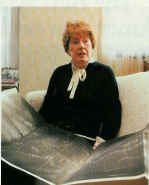|
Since every letter in the coded message is represented by several different numbers, it is one of the most difficult ciphers to break. In the case of Cipher Number Two, cracked by James Ward, Thomas Beale first composed his message, then took the Declaration of Independence and numbered off the words, starting with 1 (when) and ending with 1,322 (honor).
He substituted each letter of his original text with a number of a word in the Declaration beginning with that letter. Since there are only 26 letters in the alphabet, there were plenty of extra equivalents, which Beale chose to use at random. For example, in the opening lines of Cipher Number Two, the letter E is enciphered by the numbers 49, 7, 79 and 31. For an educated gentleman like Beale to be an expert cryptographer was not unusual. In those days waylaying other people's mail was common practice. To ensure privacy, people created their personal ciphers based on common books of the day. Thirty years before Beale supposedly devised his devilish codes, Thomas Jefferson had invented a cipher wheel that was so brilliantly conceived that a similar one was used by the American military early in World War II. By dividing a cylinder into wheels, each marked with the 26 letters of the alphabet, he could scramble messages in thousands of different ways. According to Professor Ralph E. Weber, author of the recently published book U.S. Diplomatic Codes and Ciphers, today's historians are frustrated by the coded segments of old documents, letters and diaries which, like the Beale ciphers, cannot be cracked because the keys are lost. "Some of these messages could have real historical significance," says Weber.
What can you get for $4.95?
|
